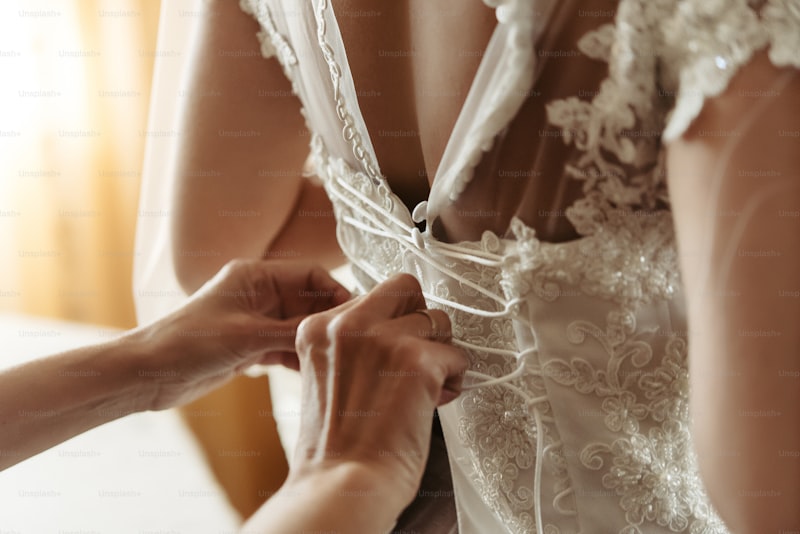Bridal Gown Alterations Explained: Your Guide to the Perfect Fit
Understanding Bridal Gown Alterations
When the wedding bells are about to ring, every detail of your special day matters, especially your bridal gown. Finding the perfect gown is just the first step; ensuring it fits you flawlessly is where bridal gown alterations come into play. In this article, we will delve into what bridal gown alterations entail, why they are essential, and how to navigate the process with ease.
Why is Alteration Necessary?
Bridal gowns often require alterations for several reasons:
- Every bride has a unique body shape and size, which may not perfectly match standard bridal sizes.
- Bridal gowns can have intricate designs that may not allow for a perfect fit off the rack.
- Bridal gowns may require adjustments to reflect the bride’s personal style, such as changing a neckline or adjusting the train.
Common Types of Alterations
Bridal gown alterations can vary significantly based on the design and fit of the dress. Here are the most common types:
| Type of Alteration | Description |
| Hemming | This involves shortening the length of the gown to prevent tripping and to fit the bride's height. |
| Taking in or letting out | Adjusting the side seams to make the gown tighter or looser depending on the bride's measurements. |
| Adjusting the Bustle | Creating or modifying a bustle allows the train of the gown to be lifted for easier movement during the reception. |
| Neckline Adjustment | This can include raising or lowering the neckline for a better fit or a more flattering appearance. |
| Adding or Removing Embellishments | Enhancing the bridal gown with lace, beads, or other decorations, or removing them if the bride desires a simpler look. |
The Alteration Process
Now that we understand the importance of alterations and the common types, let’s explore the typical process involved:
1. Initial Consultation
During the first appointment, you and your seamstress will discuss your vision, preferences, and any specific alterations that need to be made. Be prepared to be measured accurately to ensure the best adjustments. Bring the correct undergarments and shoes that you plan to wear on your wedding day to give a more accurate fitting.
2. Fittings
This stage usually includes three fittings:
- First Fitting: The gown will be pinned and marked for the necessary adjustments.
- Second Fitting: Once alterations are done, the gown is tried on again for any fine-tuning.
- Final Fitting: This is the last chance to make any adjustments before the big day.
3. Final Touches
On the last fitting, the seamstress will ensure every detail is perfect – from seams to hems, and embellishments. Discuss any last-minute changes and ensure the gown meets your expectations.
Common Questions About Bridal Gown Alterations
While preparing for your wedding, you might have several questions regarding bridal gown alterations. Here are answers to some frequently asked queries:
What is the average cost of bridal gown alterations?
The cost of alterations can vary widely depending on the complexity of the changes and the bridal shop you choose. On average, brides may spend between $200 and $600. Always request a detailed quote before starting.
How long before the wedding should I schedule alterations?
It is advisable to begin alterations at least 2-3 months before your wedding day. This timeframe allows for sufficient fittings and adjustments while reducing stress as the day approaches.
Can alterations fix a badly fitting gown?
While minor adjustments can be made, severely ill-fitting gowns may not be salvageable. It is essential to communicate your needs to the seamstress, who can best advise on what can be done.

Choosing the Right Alterations Expert
Finding a skilled seamstress or alterations expert is crucial to making your gown look stunning. Here are tips for choosing the right professional:
- Research and Referrals: Ask fellow brides or review online testimonials to find respected local seamstresses.
- Experience with Bridal Gowns: Ensure they have plenty of experience altering bridal gowns specifically.
- Consultation: An initial consultation will help assess their understanding of your needs and their professionalism.
- Affordability: Discuss their pricing upfront, making sure it fits within your budget.
Final Thoughts on Bridal Gown Alterations
Bridal gown alterations are an essential part of the bridal experience, ensuring that your gown not only fits perfectly but also makes you look your absolute best on your special day. Remember, the right alterations expert can guide you through the process, address your unique needs, and make your dream gown a reality. Always communicate openly with your seamstress about your vision, budget, and timeline to achieve the perfect fit. As you approach your wedding day, relax and trust in the alterations process – after all, it's about creating memories in a gown that is just as unique as your love story.